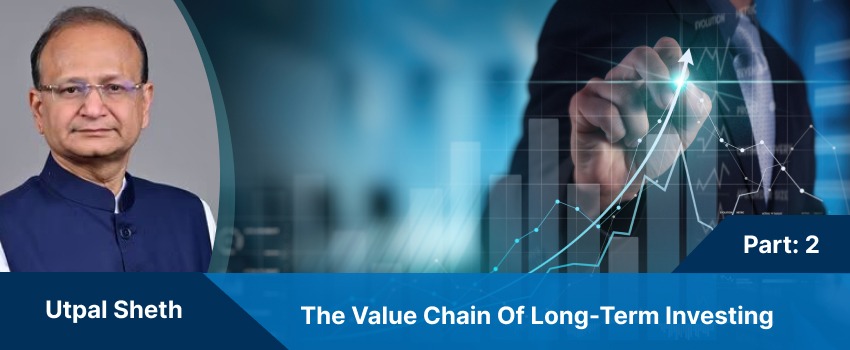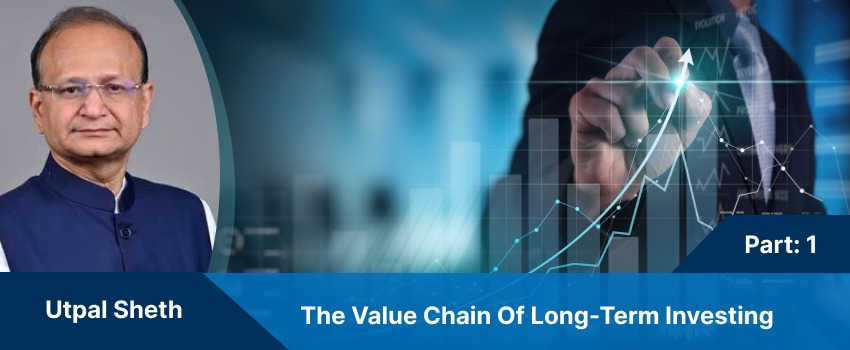A stock might be the right to own a piece of a business, and the intrinsic value of the stock was something you could estimate, but with a margin of safety, you can sleep at night. – Warren Buffett
Have you ever wondered how investment decisions are made? Does ‘Margin of Safety’ ring any bell? Well, ‘Margin of Safety’, as experts say, is the key to value investing. If value investing is being discussed, Seth Klarman’s name is bound to come into the picture. Seth Klarman is the author of the book “Margin of Safety- Risk Averse Investing Strategies for the Thoughtful Investor”, which is being touted as one of the best value investing classics ever since it was first published in 1991.
In this book, he has compiled wise and timeless ideas on markets and science of investing. The ‘Margin of Safety’ in investment decisions provides a buffer between what investors pay for the stock and what they think it is worth, so that they are protected against unforeseen events or miscalculations.
In his first and only book, Seth Klarman has described his investment philosophy in detail. The book is out of publication for over a decade now, but one can, sometimes, find it on eBay for around $1,000 since people regard it as a collectible.
Seth Klarman is the chairman of Baupost Group, which is a Boston-based investment firm. He is considered to be one of the most successful value investors.
The Baupost Group is one of the largest hedge funds in the world. It has consistently been one of the top performing hedge funds and, according to Bloomberg, L.P, is ranked fourth in net gains since inception.
Klarman divides the book into three parts. The first part is about where investors make mistakes. In this part, the author starts by describing what speculators and unsuccessful investors do. He analyzes how price is important in determining the behavior of the market participants. In today’s financial markets, the institutional investors are the dominant players and hence it is necessary to understand their behavior to understand the price fluctuations. An important reason to analyze the behavior of other investors and speculators is that their actions create opportunities for value investors.
The market is a battleground where the investors must choose their sides carefully. The first choice – consists of majority of investors and speculators. Here the decisions are based on emotions of greed & fear and short-term performance. This is the wrong choice. The other side involves making decisions based on fundamental analysis. Not many people choose this side because it requires commitment and patience.
According to Klarman, value investing is the only approach that will give positive results in the long term but with minimum risk. Value investing is not some kind of mystical art that can be practiced by only a selected few. On the contrary it is very simple. It only consists of determining the value of an underlying security and buying the security at a considerable discount from that value. The biggest challenge is to maintain the required patience and discipline to buy only when the prices are attractive and to sell when they are not irrespective of the market sentiments.
However, investors – both individual and institutional – have often displayed their unwillingness to take long term investment decisions based on thorough fundamental analysis. The main reasons for this are the short-term performance pressures faced by the institutional fund managers and the frenzied atmosphere of the market.
The second part of the book explains the underlying philosophy of value investing. Here, the author analyses why most of the investors are risk averse and what are its implications. At the core of the philosophy of value investing, is the concept of margin of safety. The three pillars of value investing are:
- A bottom-up approach to investment selection,
- Focus on absolute performance
- Emphasis on return as well as risk.
The primary focus of most of the investors is on returns i.e. on how much they can make. Value investors on the other hand focus on risk i.e. on how much they can lose. This is because the main goal of value investors is preservation of capital. Hence they incorporate margin of safety in their analysis in order to avoid sizeable losses over a period of time. This margin of safety protects the value investors from large losses when the markets are declining.
The third part of the book focuses on the value investment process. Here the author describes the research and analytical process i.e. from where the value investors get their ideas and how they evaluate them. The author also describes the different kind of value-investment opportunities like corporate liquidations, spin-offs and risk arbitrage with special focus on thrift conversions and financially depressed and bankrupt securities. It also highlights the importance of good portfolio management and trading strategies. In the end, the author talks about how one should go about selecting an investment professional to manage your money.
In the book, the author has given specific examples of the investments that he has made over the years. The main intent behind giving these examples seems to demonstrate how value investment opportunities can arise in different situations.
The book is simple yet profound. It belongs to the league of legendary books like The “Intelligent Investor” by Benjamin Graham, “Common Stocks and Uncommon Profits” by Philip Fisher and “One Up Wall Street” by Peter Lynch. This book does not have any tables, no formulae or any Greek symbols. It is just 250 pages of common sense which can be grasped by anyone who has a basic understanding of investing and accounting. This book is a must read for anyone who wants to learn value investing; especially, for budding investors, research analysts and investment professionals.
If you liked what you read and would like to put it in to practice Register at MoneyWorks4me.com. You will get amazing FREE features that will enable you to invest in Stocks and Mutual Funds the right way.
Need help on Investing? And more….Puchho Befikar
Kyunki yeh paise ka mamala hai
Start Chat | Request a Callback | Call 020 6725 8333 | WhatsApp 8055769463










Very informative…many more books on stock markets for beginers could be added .
@Sumateja Thanks for your comment. That is our idea as one can see in our past and coming stock shastras.
Nice article. I heard about this book in other forums but this clearly summarizes whats covered in the book in a simple, neat and concise manner. I have invested, followed news, did some trading, lost some money, etc. But after reading about value investing I was still not convinced. After doing all background research and home work, only two things need to be done – determine the intrinsic value of the stock and buy when the stock is at a good discount to intrinsic value. However, this is easier said than done ….the difficulty is not in estimation of IV which can be done but more about waiting patiently till you get it at a discount (MOS).
@e3f2433af862fe7400c4bebbff370bce:disqus We appreciate your feedback. Do keep reading as many more such stock shastras are on their way!